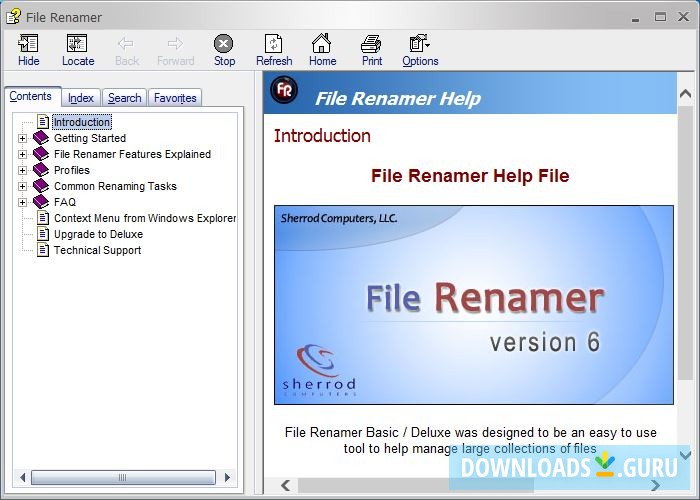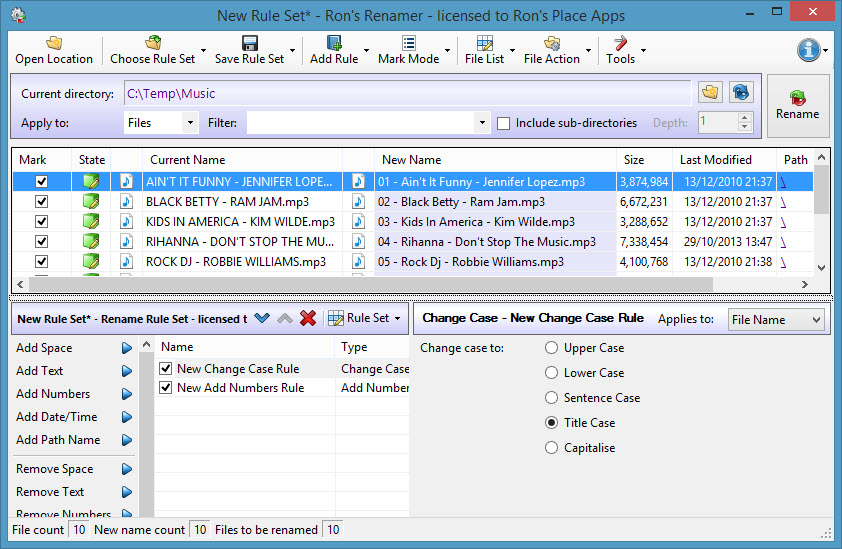
That said, I recommend using it in conjunction with Explorer for undoing the rename or delete action, because the tool lacks built-in options for these. It has the ability to scan thumbnails, filter the files by extension, & add prefixes or suffixes or other elements, including unique parameters. Folder and file copying, renaming, and moving is made possible based on multiple options, properties, and options. Supports many audio, image and video file formats like mp3, wma, flac, ID3 and more.
Multiple file renamer windows 7 windows#
The application does not refresh the folder view, so you can't really tell whether the change was applied just by looking at its interface, which means you need the Explorer window open in the background to see if the modification was successful. I want to suggest that File Renamer Basic should be run in Windows 7. Rename and tag multiple files and folders. The application isn't portable. Here are some cons in the tool.
Multiple file renamer windows 7 how to#
Multiple File Manager is an open source software available for Windows, Linux and macOS. How to rename files sequentially 1) Select the files you want to rename with sequential numbers 2) Select Actions > Rename. The program compares the names of the files to detect duplicates.

The last option in Multiple File Manager, lets you delete duplicate files from the selected content. The last renaming option in the program is Rename File: Insert, it has two fields labeled before and after, which allow you to add a prefix and a suffix to the filename. because of the multiple file extensions.Rename File: Replace is similar to the first option, but has an additional text field for the replacement word. Rename photos using date picture taken and other EXIF information. Batch renaming made easy and you can rename multiple files (thousands) in a few clicks. Powerful and yet simple and easy to use interface with built in preview to see new names before you rename. When I do this though, I have duplicate "Image (1)" etc. File Renamer to rename multiple files with 40+ renaming actions. '01 - Agreement.pdf' and '02 - Application.pdf'. I have a preset name for each number that I would like included in the file name. I need to scan a package of documents and can easily do this into files numbered 01-50. The renaming process will start from the first selected file and end on the.

Note: Before renaming the file, you should arrange them properly if you want to provide any specific order. I have folders of photos of both jpg and png types and I want to sort them by date and name them "Image" so that all files will be named "Image (X)" sorted by date. Rename multiple files with unique preset list. Once all the files are highlighted, right click on the first file and from the context menu, click on Rename (you can also press F2 to rename the file).


The actual reason I want to do this is for my photos. Is there any way to select all files in a folder of different types and batch rename them to all have "File (X)" instead of having duplicates? If the files in that same folder were "abc.jpg", "123.mp3" and "Null.txt" and I did the same rename, all files would be named the same thing like "File.jpg", "File.mp3" and "File.txt". The problem that I am having is when you use this feature on files of different types. For example, a folder with the files "abc.txt", "123.txt" and "Null.txt" batch renamed "File" would become "File (1).txt", "File (2).txt" and "File (3).txt" respectively. Best windows explorer replacement freeware This is a program to rename multiple files Its a powerful digital camera picture utility. This will make all selected files the name you typed in with an "(X)" after it. Rename all files with ease - Perfect multiple file renamer for windows XP, Vista, 7 & 8. This is when you select multiple files, right click and select "rename" and then type in the new name into the first file's name field. Now you can invoke the batch file at the command prompt or from another batch file like this: batchname. I have a problem with the batch rename feature in Windows 10.


 0 kommentar(er)
0 kommentar(er)
